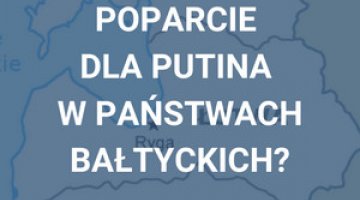Russia-Lithuania: towards a normalisation of gas relations?
In early May, the Lithuanian government revealed that, for the first time in the history of the independent state, they were negotiating a reduction in the price of gas from Gazprom. The degree of this reduction is not known. On 29 May, the Lithuanian price and energy commission confirmed an average reduction of 20% for individual consumers who are supplied 100% by the Lithuanian gas distribution company Lietuvos Dujos (LD), which negotiated the reduction (LD serves around 40% of the Lithuanian market, mainly individual customers and private households). In recent years Lithuania has unsuccessfully requested Gazprom to open discussions about prices, which (as Lithuanian sources have reported) Gazprom has maintained at a level 15% higher than the estimated average for the supply of Russian gas to Europe. The current agreement, however, is only a prelude to more important negotiations which must be undertaken in the near future. Gazprom had to accept the variant proposed by Lithuania of unbundling on the gas market, and now Lithuania must reach an agreement by November on purchasing Gazprom’s gas assets in the companies formed after the division of Lietuvos Dujos, the former monopoly gas company. Lithuania has already purchased the shares owned by the German E.ON Ruhrgas company. One of the tools for breaking Gazprom’s monopoly on the Lithuanian market has been the consistent implementation of plans for the development of energy infrastructure in the country, including the opening of an LNG terminal in Klaipeda at the end of 2014. A lawsuit by Lithuania against Gazprom is still under arbitration in Stockholm; Vilnius is demanding high compensation for the illegal raising of the price of gas since 2004.
The context of Lithuanian-Russian gas relations
2015 will see the expiry of the agreement on gas supplies and the transit of gas to the Kaliningrad region, which was signed with Gazprom by Lithuania’s social democratic government under Algirdas Brazauskas. This was signed in 2004, together with an agreement on the acquisition of shares from the then gas monopoly Lietuvos Dujos (LD). The sale of a 37.1% stake in LD to Gazprom, at a preferential price, was intended to ensure a favourable gas price for Lithuania which corresponded to market conditions and was based on a stable formula. E.ON Ruhrgas paid almost twice as much as Gazprom for its shares in the Lithuanian company (the German company acquired 38.9%). The Russian party failed to comply with the agreement. Due to the presence of Gazprom representatives on the board of LD, the Lithuanian company accepted a change to the formula without consulting with the Lithuanian government (which retained only 17.7% of the shares in LD). Only after Andrius Kubilius’s right-wing government took power in Lithuania was work started on eliminating the negative effects of the privatisation agreement. In 2010, actions were taken to remove Gazprom representatives from the board, in order to prevent further changes to the formula; and preparations were begun for the implementation of ownership unbundling, in order to deprive Gazprom of control over LD’s transmission network. It was also decided to construct an LNG terminal in Klaipeda, to create an alternative to gas supplies from Gazprom. In 2012, Lithuania also brought a claim against Gazprom to arbitration in Stockholm for a sum of €1.45 billion, representing compensation for the increases which had been unlawfully introduced since 2004. These actions will not only improve Lithuania's negotiating position in its relations with Gazprom, but may also end its dependence on its sole supplier of gas.
The reduction in gas prices for Lithuania
The new prices will apply from 1 July until the end of 2015. This price reduction is not a result of the concessions obtained, which only cover about a third of the price. The other two-thirds represent the compensation for the earlier charges, with retrospective effect from 2013. Lithuania believes that the increase in the prices charged by the Russian company were unlawful under the provisions of the long-term contract. The reductions and the retrospective compensation mean that during the negotiations on a new long-term contract, the price proposed to Lithuania should not exceed the current price after the reduction; the media have speculated that this will come to around US$370 per 1000 m³. LD’s reports about the negotiations on reductions will satisfy its individual customers, but will not significantly affect the economy of Lithuania. Despite emerging speculation, it is not yet known what concessions the Lithuanian side made in exchange for the price reduction it has achieved. The announcement of the reduction has an important propaganda dimension for both the Lithuanian government and Gazprom. The announcement comes just before the presidential elections in Lithuania, where the incumbent Dalia Grybauskaite has strongly advocated a tough attitude in negotiations with Gazprom. For its part, the Russian side may expect that the change in its attitude towards Lithuania will be taken into account by the European Commission, as the latter examines the behaviour of Gazprom.
Challenges in negotiations with Gazprom
In August 2013, the Lithuanian authorities split up the Lietuvos Dujos company, which had formerly been the country’s gas monopoly. At present LD distributes gas, whereas a completely new company, Amber Grid, will operate the transmission and own the gas network (and will also be responsible for the development of gas infrastructure, including the construction of the gas link with Poland). Currently, the shareholding structure of both companies corresponds to the previous division of shares in the former Lietuvos Dujos; Gazprom owns 37.1% of the shares in each company. The Lithuanian authorities should complete the process of dividing the companies’ ownership by November 2014. Lithuania also managed to come to a similar agreement with the other foreign shareholder in LD, the German company E.ON. Currently, the state owns 56.6% of the shares in both companies, which cost the Lithuanian side €113.1 million.
Lithuania’s goal is primarily to deprive Gazprom of its ability to control the transmission network. In this way, a transmission system operator which is independent of the vendor could negotiate a new gas contract with Gazprom. Meanwhile, the Russian supplier’s goals are the exact opposite; it seeks to maintain control, primarily of the transmission operator Amber Grid (AG). After purchasing the shares in the Lithuanian monopoly LD, Russia has also gained security for the gas supply to the Kaliningrad region, where it has expanded its electricity production capacity by an additional 900 MW). LD has financed the costly extension of the gas links in response to the increased demand for gas from the region. The LD company, which is controlled by Gazprom, has not disclosed how much Lithuania earns from the transit, nor whether the investment in infrastructure has made a profit.
The Lithuanian government wants to offer Gazprom 0.653 euros per share in LD (to a total cost of €70.4 million), and 0.762 euros per share in AG (€50.3 million). Gazprom has not disclosed its opinion of these proposals. During the talks, the parties will also probably discuss the question of gas prices post-2015. It is possible that Lithuania will suggest to Gazprom that it will withdraw or suspend the lawsuit it filed at the court of arbitration in Stockholm in 2012.
The LNG terminal: Lithuania’s trump card in negotiations with Gazprom
This autumn, Klaipeda should receive a floating storage and regasification unit (FSRU) leased from the Norwegian company Höegh LNG, which has just been finished in a Korean shipyard, and will be the main component of the LNG terminal in Klaipeda. The terminal will be able to cover almost all the three Baltic states’ annual demand for gas, a sum of 5.5 bcm (of which Lithuania needs 3 bcm). This is how Lithuania is preparing for a possible future without long-term contracts for gas supplies from Russia. It also expects that the ever-growing LNG market and the existing level of competition will reduce the current high gas prices on the spot market. On 26 May, the Lithuanian government and the Norwegian company Statoil announced their intention to sign an agreement in July for the supply of raw material to the Lithuanian terminal. The agreement is for an annual supply of 0.54 bcm of liquefied gas over the next five years. The Lithuanian Prime Minister announced that Statoil’s price offer is confidential, but should be lower than the average on the international LNG market; however, this does not mean that it will be lower than Gazprom’s offer. The terminal will also be supplied through purchases of LNG on the spot market. The Lithuanian government believes that the terminal will also be able to take foreign commercial customers, including those interested in supplying fuel to vessels crossing the Baltic Sea, the North Sea and the English Channel. LNG is one option for replacing heavy fuel oil as a power source that will meet the requirement to reduce by 2015 the sulphur content of fuels used by ships.
Summary
The current agreement with Gazprom does not allow us to fully predict how relations with the Russian supplier will develop after 2015. However, Gazprom must take into account that its position on the Lithuanian market is different today than it was in 2004. The Lithuanian government will seek to deprive Gazprom of its control over infrastructure transmission – if not through the repurchase of shares, then by removing the Russian gas company’s representatives from the board of directors. The Lithuanian right wing will probably insist on the greater involvement of the government and the president in these negotiations, as LD is presently still Gazprom’s partner in them.





